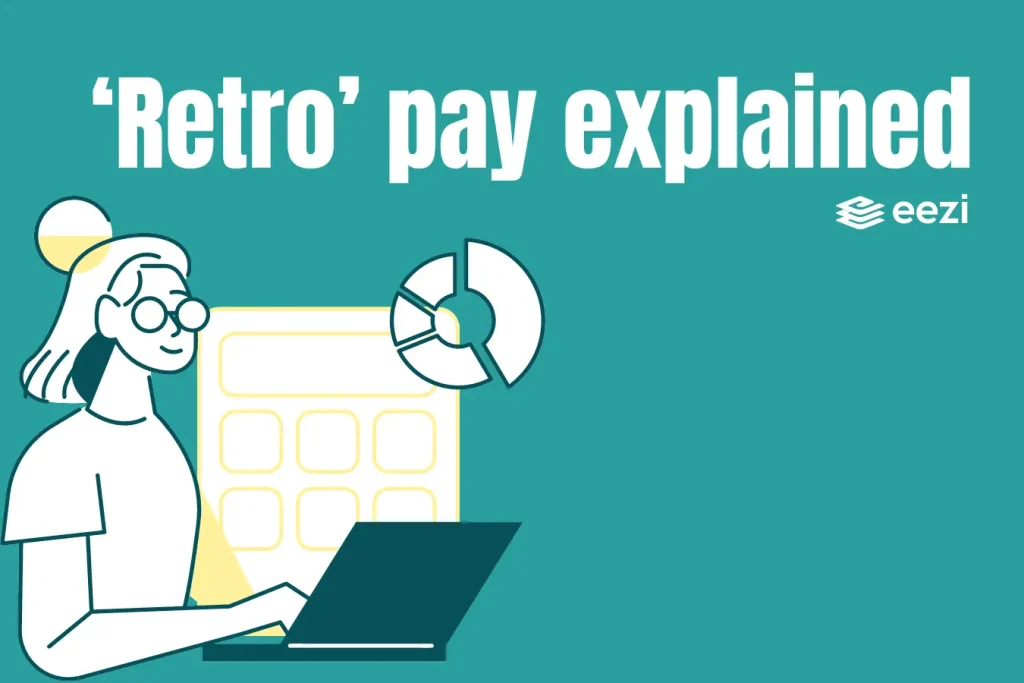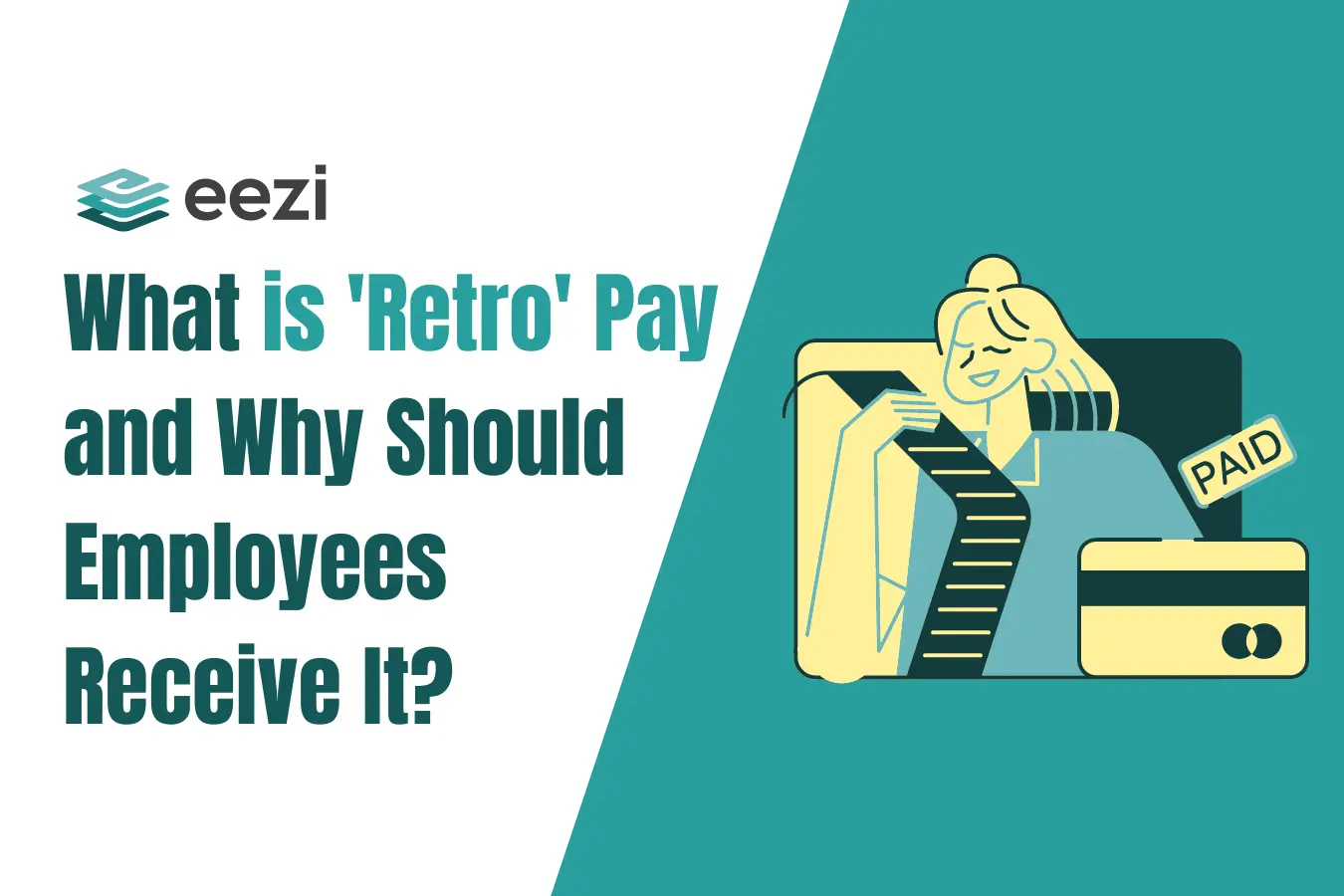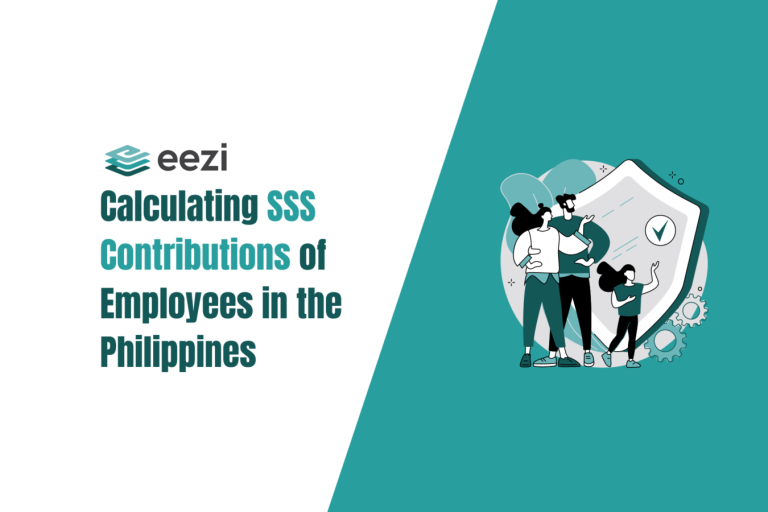Learn all about ‘retro’ or retroactive pay and the instances where it applies.
Key Points
- Retro pay or retro is an adjustment to correct previous discrepancies between the wage and the actual work performed.
- Retro is different from back pay. The former applies when correcting miscalculated overtime pay, pay raise discrepancies and minimum wage violations. On the other hand, Back pay applies when correcting missed wages, unpaid overtime, and the like.
- Often, the retro pay is smaller compared to the back pay.

Adjustments to employee salaries are common practice. This applies when there are discrepancies in the payroll system, like between the actual work performed and the compensation received. When this happens, employees should receive retroactive pay or retro. This ensures fair and equitable remuneration, addressing instances where wage increases or adjustments were implemented late.
Retroactive pay addresses the discrepancies between actual work rendered and the employee’s compensation provided. As such, it ensures that employees are justly receiving what they are owed.
When you apply retroactive wages, it fosters trust, motivation, and loyalty among the workforce. Moreover, it demonstrates a commitment to valuing employees’ contributions.
Understanding retroactive pay is crucial, as it reinforces employer-employee relationships based on trust and mutual respect.
Is retroactive pay the same as back pay?
Most employers and employees think of “back pay” when referring to adjustments in salary discrepancies. However, retro pay is different from back pay, and the two terms should not be loosely interchanged.
Back pay refers to compensation for wages or salaries not received by the employee. For instance, if an employer fails to pay an employee for a certain pay period, the adjustment is a back pay.
An employee is entitled to back pay if he did not receive due compensation for the following:
- bonuses
- missed regular wage
- unpaid overtime work rendered
- unpaid commissions
In short, back pay is applied to correct any unpaid compensations in any given pay period.
Retroactive payment, on the other hand, refers to monetary compensation added to an employee’s pay. This applies in cases where the employee received less than what they were supposed to get in a pay period.
A retroactive payment is applied to an employee’s payroll in some cases, such as:
- discrepancies in the pay raise received
- miscalculated overtime earnings for extra hours worked
- a deficit in overtime pay applied
- pay differentials for work rendered beyond normal business hours
- minimum wage violations
To summarize, an employer must add retro payments to the next pay period to correct payroll mistakes. This includes miscalculations, deficits, and whenever there is a compensation shortfall in an employee’s pay rate.

Retro pay explained
Retro pay, short for retroactive pay, is a form of supplemental wage or compensation issued to employees for work performed in a previous pay period. This often results from delayed salary adjustments, contractual changes, unpaid extra wages, discrepancies in regular wages, and payroll mistakes.
Retroactive pay aims to correct any discrepancies between the pay an employee received and the updated rates owed for past services. This covers overtime pay, discrepancies with multiple pay rates for employees with two or more positions, unpaid pay raises, corrections for the wrong rate paid, and other compensation shortfalls as described in the labor laws.
Retro pay is commonly applied when an employer fails to implement a pay raise after the intended effective date. Thus, the pay ensures that the employee receives the correct compensation retroactively to the pay period when the adjustment should have taken effect.
As described in the Philippine labor laws, employers must pay employees accordingly and have all payments duly reflected in their pay stubs.
Retro meaning in salary and payroll computation
In terms of salary and payroll, “retro” carries a simple yet significant meaning. It refers to looking back, particularly when it comes to pay adjustments.
Calculating retro involves making sure employees receive the correct compensation for past work, especially when there are delays in implementing pay changes. It’s like giving credit where it’s due and acknowledging the value of previous efforts.
In payroll lingo, “retro” is all about ensuring fairness and accuracy, making sure everyone gets their rightful earnings.
When should an employer issue retro pay?
Payroll discrepancies occur when the appropriate compensatory amount is less than what an employee actually receives. In this case, retro pay is in order.
Here are some instances where an employer must issue retro pay for his or her employees:
Miscalculated Wages
Even with automated payroll systems, wage discrepancies can still occur. It can be due to technical issues that resulted in incorrect work hours being tracked or changes in the employee schedule that caused overlaps or missing work hours. Even typos in entering data for work hours rendered can cause miscalculations in the resulting employee salaries.
Bonuses and Incentives
There are cases where an employee earns a bonus or incentive for exceptional performance that didn’t get included in the previous pay cycle. In this case, the employer must include the appropriate compensation in the current pay cycle to ensure that the employee receives it.
Changes in Pay Rates
If an employee gets promoted or gets a raise in between pay cycles, he or she is entitled to retro pay for the corresponding new pay rate.
Commissions and Gratuities
An employee’s retro pay can also include commissions and gratuities earned through the company’s incentive programs and other employee compensation packages that were not included in payroll computation from the previous pay periods.
Miscalculations and Overtime Violations
Discrepancies can also include incorrect computations of employee overtime hours. Overtime payment must be recompensed in the form of retro payment.
Employers must also ensure that all supplemental pay and miscellaneous income are duly reflected on the employee’s pay stub.
How to calculate retro pay for discrepancies from the previous pay period
An employer is required to distribute retro pay to ensure that an employee’s regular wages are issued accordingly for all pay periods.
Efficiently calculating retro pay and promptly disbursing it is important for ensuring employee satisfaction while maintaining compliance with labor laws.
Salaried employees are entitled to retroactive payments if an employer fails to issue the correct amount of compensation in any given payroll period.
The formula to calculate retro pay is as follows:
Retro pay = amount to be paid – amount issued/received (by the employee)
However, employers must note that when computing retro pay, applicable taxes should still be taken into consideration.
Prior to issuing retro pay, the employer will need to withhold appropriate federal income taxes, local income taxes, and FICA taxes, as necessary.
It is also worth noting that supplemental pay, in this case, retro pay, is subject to the same tax withholding rates as the employee’s regular pay rate for a given payroll period.
How to calculate retro pay for different types of employees
Hourly employees
For hourly employees, the process is simple:
- Step 1: Determine the period of underpayment.
- Step 2: Identify the correct hourly rate and the paid (incorrect) hourly rate.
- Step 3: Calculate the difference between the two rates.
- Step 4: Multiply the difference by the total hours worked during the underpaid period.
Example
Period: 8 weeks
Incorrect rate: ₱100/hour
Correct rate: ₱120/hour
Total hours: 320 hours
Retro Pay Calculation:
₱20 (difference) x 320 hours = ₱6,400
Salaried employees
For salaried employees, the retro pay calculation involves determining the prorated amount based on the monthly salary difference.
- Step 1: Identify the period of underpayment.
- Step 2: Determine the correct monthly salary and the paid (incorrect) monthly salary.
- Step 3: Calculate the difference between the two monthly salaries.
- Step 4: Multiply the difference by the number of months underpaid.
Example
Period: 2 months
Incorrect monthly salary: ₱30,000
Correct monthly salary: ₱35,000
Monthly difference: ₱5,000
Total Retro Pay:
₱5,000 x 2 months = ₱10,000
Employees with variable pay
For employees with variable pay (e.g., those who earn commissions or bonuses), retro pay involves recalculating the variable components.
- Step 1: Identify the period of underpayment.
- Step 2: Determine the correct and incorrect pay components (base pay, commissions, bonuses).
- Step 3: Recalculate the variable components based on the correct rates or amounts.
- Step 4: Sum the differences for each component to determine total retro pay.
Example
Period: 3 months
Incorrect base pay: ₱20,000/month
Correct base pay: ₱25,000/month
Incorrect commission rate: 5%
Correct commission rate: 7%
Total sales: ₱200,000/month
Base Pay Difference:
- ₱5,000 (difference) x 3 months = ₱15,000
Commission Difference:
- Incorrect: ₱200,000 x 5% = ₱10,000/month
- Correct: ₱200,000 x 7% = ₱14,000/month
- ₱4,000 (difference) x 3 months = ₱12,000
Total Retro Pay:
₱15,000 (base pay) + ₱12,000 (commission) = ₱27,000
Should I include taxes when calculating retro pay?
Retro payments will affect applicable taxes when calculating an employee’s paycheck.
As an employer, while computing retro pay for your employees, you must still make sure to withhold federal income tax correctly.
You should use either the percentage or aggregate method to withhold federal income tax from the retroactive payment.
If applicable, withhold FICA tax (Social Security and Medicare taxes) and additional taxes such as state income tax and local income tax.
Conclusion
Employers are mandated to issue retro pay to uphold fairness and maintain trust within the workforce. It serves as a mechanism to rectify delayed salary adjustments, ensuring employees receive just compensation for past contributions.x
This practice aligns with ethical employment standards, demonstrating a commitment to equitable remuneration. Retro pay is a crucial element in fostering a positive work environment, bolstering employee morale, and promoting loyalty.
From a legal standpoint, it aligns with labor regulations, reinforcing the obligation of employers to compensate workers accurately. Ultimately, the issuance of retro is essential for harmonious employer-employee relationships, cultivating a workplace built on transparency and respect.
Unlock the potential of your micro and small businesses with eezi
Embrace a cloud-based solution that’s fit to your small business needs. Experience the ease of managing your workforce effortlessly. Your success is just a click away — optimize your HR and payroll processes with eezi!



